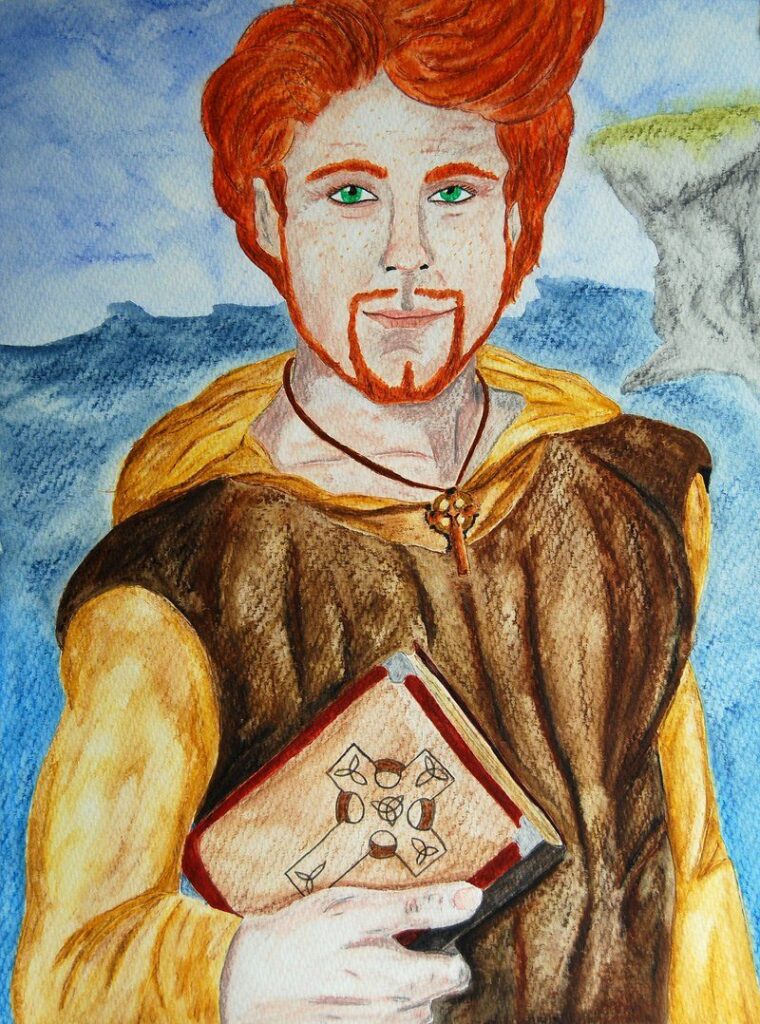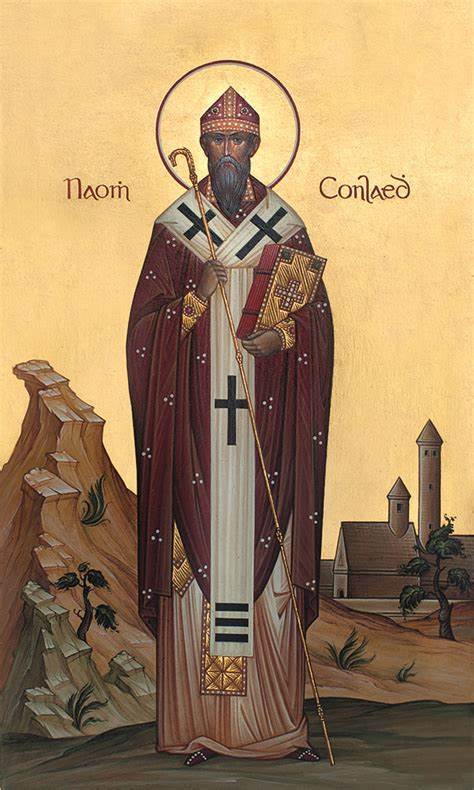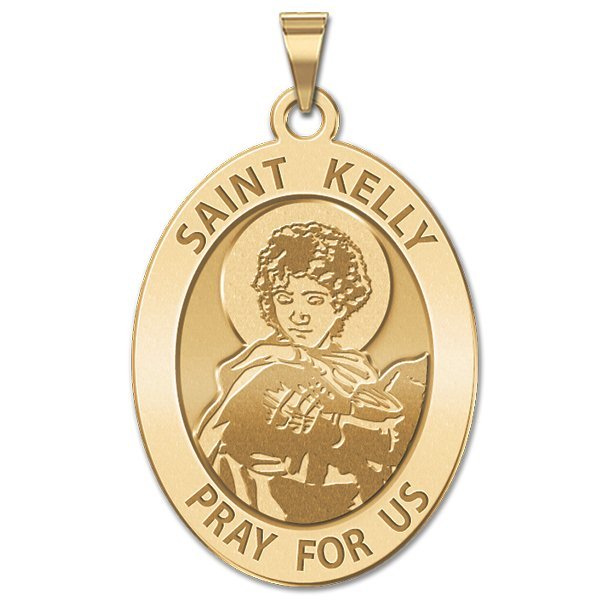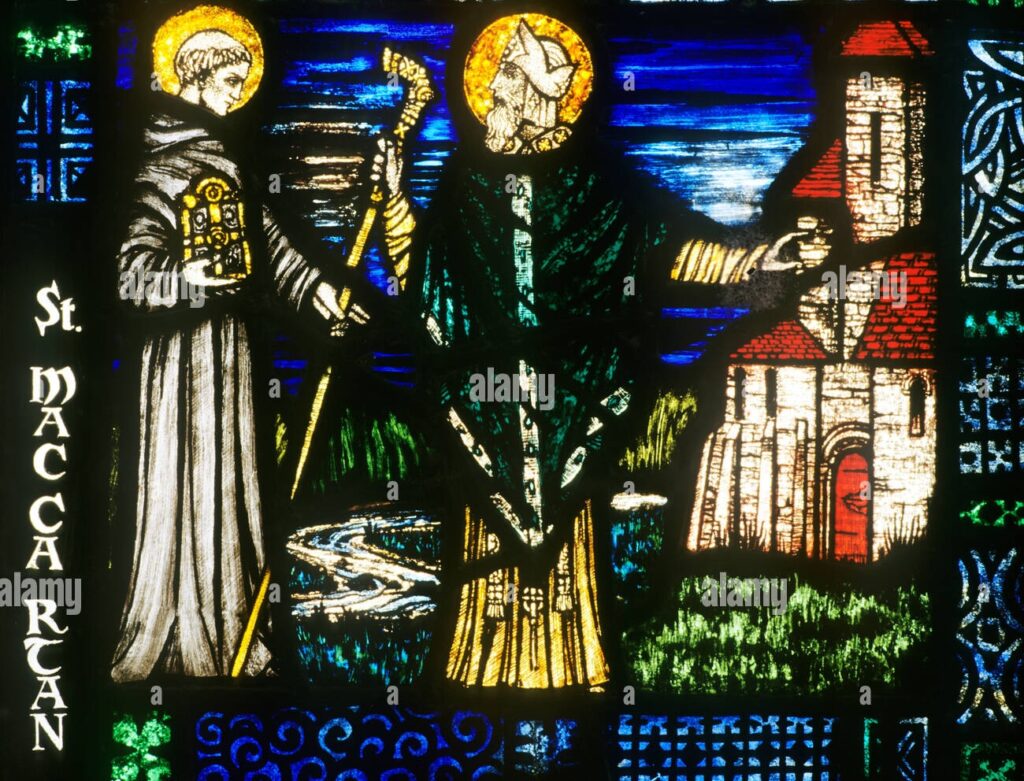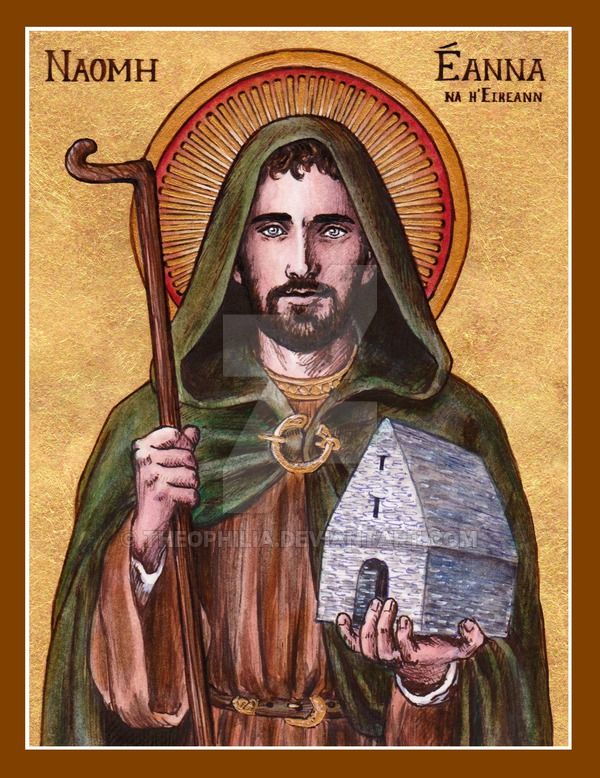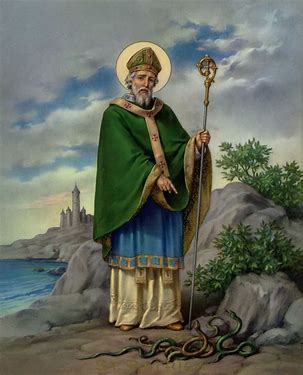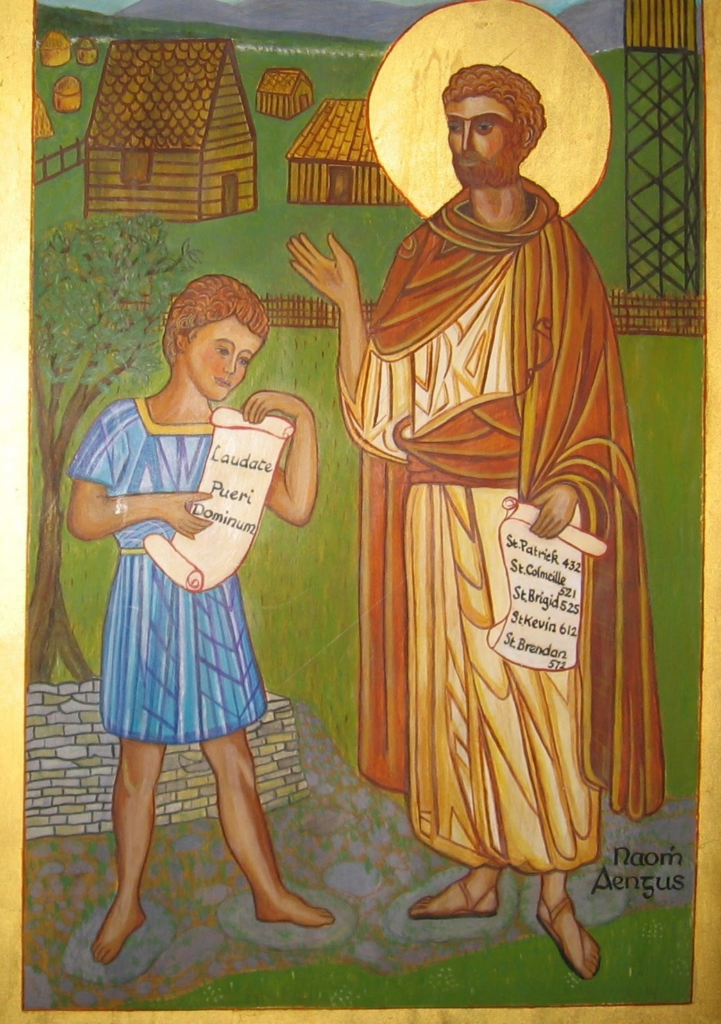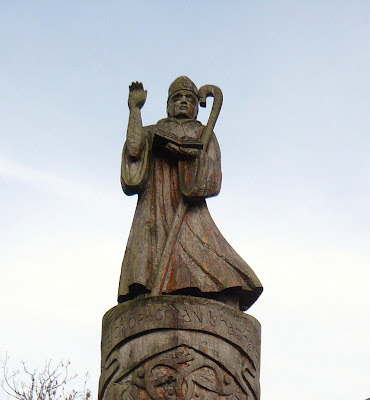
Carthage (affectionately known as Mochuda) was born near Castlemaine 564. He was a Kerry man and a swineherd. He was herding his father’s pigs in the fields, and by providence he saw passing a religious procession, with a bishop and clergy chanting psalms. Carthage was so moved at the sight that he ran to tell his father of the wonderful spectacle. Now his father had plans for Carthage to become a warrior, but with time, and after some resistance, his father relented. His son Carthage became a monk instead in a nearby monastery.
The young Carthage became a disciple of St. Carthage the Elder. The lad earned his knick name, Mochuda and did his religious profession at age twenty, in 584; he was ordained priest and founded the monastery of Kiltullagh in Kerry around 590-592. Mochuda was very handsome, and young women were swooning at the sight of him. But the clever chap used his charms, persuading them to devote themselves to God as virgins. He built them cells around his monastery.
Mochuda eventually had to leave Kiltullagh, and visited other monasteries, staying with St. Comgall at Bangor for a year. He also visited Colman Elo at Lynally in Offaly, on whose advice in 590 he established his second monastery at Rahan near Lynally. The Rahan enterprise was a great challenge for Mochuda even though it thrived for forty years. His austerity was so severe, that his disciples felt unable to match his virtues, instead they sought to rid themselves of their master. Mochuda’s enterprise came to an end at the order of the High King Blathmac, based in Tara.
The Irish Abbot lived by the Roman Easter calendar as opposed to the more common Celtic Easter Calendar of that era in Ireland. At around Easter time in 635, Mochuda and his community were constrained to move on by the high king’s soldiers. But their expulsion from Rahan, led to a newer foundation at Lismore. The monks journeyed by Saighir, Roscrea, Cashel, and Ardfinnan. Finally Mochuda arrived at the banks of the River Blackwater. He obtained permission to build a monastery from the king of the Déisí at Lismore (Lios-mór) in Co. Waterford. The name Lismore means the “Big Ring-Fort. Mochuda died a short time later on his arrive to Lismore, dying on the 14th May 637.
St. Mochuda’s legacy is that of a very austere & ascetic life. The Saint refused at first to acquire even an ox or plough. The tillage had to be done by hand & shovel strength. His monastery was to become a famous abbey and later became a diocese. At Lismore, besides establishing a thriving abbey, Mochuda had a scriptorium that produced three important manuscripts of works on scripture, asceticism and morals. Lismore monastery had a school of metalwork, where artefacts like the famous Lismore Crozier were artificed. The Crozier and the Book of Lismore were found concealed in the walls of the Lismore Castle in the nineteenth century. The present day castle replaced the monastic buildings.
A biography on the life of St Mochuda is still extant and there are many fragments of a Rule of St Carthage. This large diocese was joined with the smaller Waterford city diocese in 1363. Mochuda is remembered by the church on the 15th May.
